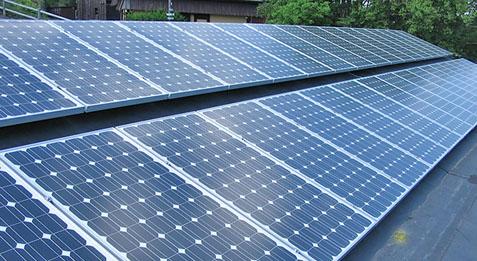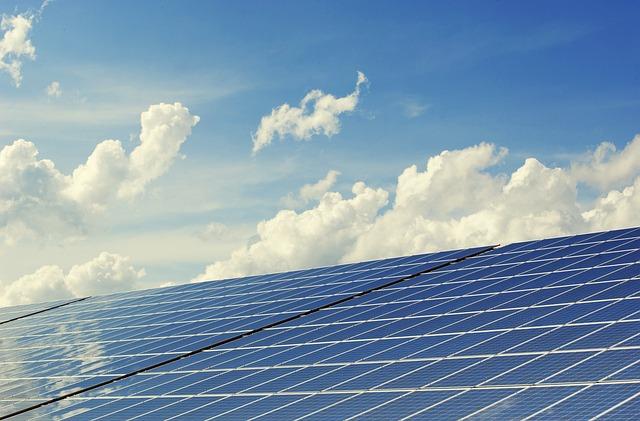In the ever-evolving dance between human innovation and environmental stewardship, solar panels have emerged as a beacon of hope, harnessing the sun’s energy to power our world. Yet, beneath their gleaming surfaces lies a complex tapestry of manufacturing processes that, if left unchecked, could cast shadows over their green promise. This article delves into the heart of solar panel production, exploring the sustainable practices that are transforming this industry from within. By examining the strides being made to reduce waste, conserve resources, and minimize carbon footprints, we uncover how manufacturers are not only capturing sunlight but also lighting the way towards a more sustainable future. Join us as we journey through the world of solar panel manufacturing, where innovation meets responsibility, and the promise of a cleaner tomorrow begins today.
Innovative Materials Transforming Solar Panel Production
In recent years, the solar industry has witnessed a remarkable shift towards more eco-friendly production methods, largely due to the advent of innovative materials. These cutting-edge materials not only enhance the efficiency of solar panels but also significantly reduce the environmental footprint associated with their manufacturing. One such material is perovskite, a mineral-inspired compound known for its exceptional light absorption and ease of production. Perovskite solar cells have shown the potential to outperform traditional silicon-based panels, providing a sustainable alternative that requires less energy and fewer resources to produce.
Another exciting development is the use of biodegradable polymers in solar panel encapsulation. These polymers offer a sustainable solution to the problem of waste associated with the end-of-life of solar panels. The benefits of these innovative materials extend beyond just environmental considerations. By adopting them, manufacturers can enjoy a range of advantages, including:
- Reduced energy consumption during production
- Lower raw material costs
- Improved panel efficiency and longevity
- Enhanced recyclability and waste reduction
As these materials continue to evolve, they promise to play a pivotal role in making solar energy a more sustainable and accessible power source for the future.

Energy Efficiency in the Manufacturing Process
Incorporating energy efficiency into the core of solar panel production is not just a trend but a necessity for sustainable development. Modern manufacturing facilities are increasingly adopting advanced technologies and processes that minimize energy consumption while maximizing output. Automation and smart manufacturing systems play a crucial role in reducing waste and optimizing energy use. For instance, using precision laser cutting instead of traditional methods can significantly cut down on energy costs. Additionally, implementing real-time monitoring systems allows manufacturers to quickly identify and rectify inefficiencies, further reducing energy consumption.
- LED lighting in production areas instead of traditional lighting systems.
- Utilizing energy-efficient motors and drives for machinery.
- Heat recovery systems to reuse waste heat generated during production.
- Adopting renewable energy sources for manufacturing operations.
Such measures not only enhance the environmental profile of solar panel manufacturing but also contribute to significant cost savings. The adoption of sustainable practices in the production process is becoming a benchmark for companies aiming to lead in the renewable energy sector, ensuring they meet both economic and environmental goals.

Reducing Waste: Circular Economy Approaches
In the quest for more sustainable practices, solar panel manufacturers are increasingly turning to the circular economy to minimize waste and enhance resource efficiency. This approach emphasizes keeping materials in use for as long as possible, extracting maximum value from them, and then recovering and regenerating products at the end of their service life. By adopting circular strategies, companies are reducing the ecological footprint of solar panel production, from the sourcing of raw materials to the disposal of end-of-life panels.
- Material Recovery: Manufacturers are developing methods to recover and recycle valuable materials such as silicon, silver, and glass from decommissioned panels.
- Design for Disassembly: Solar panels are being designed with easy disassembly in mind, allowing for efficient recycling and reuse of components.
- Resource Efficiency: By optimizing production processes, companies are reducing waste and energy consumption, thereby lowering the overall environmental impact.
These innovative practices not only align with global sustainability goals but also present economic opportunities, enabling manufacturers to reduce costs and open new markets. Embracing a circular economy in solar panel manufacturing thus represents a pivotal shift towards a more sustainable future.

Collaborative Efforts for a Greener Supply Chain
In the journey towards more sustainable solar panel manufacturing, collaboration has emerged as a cornerstone. By fostering partnerships across the supply chain, companies are leveraging collective expertise to reduce their carbon footprint. These collaborative efforts include:
- Shared Research and Development: By pooling resources, manufacturers can innovate more efficient production methods that minimize waste and energy consumption.
- Joint Supplier Initiatives: Establishing shared standards for sourcing raw materials ensures that each component of the solar panels is produced sustainably.
- Integrated Logistics: Coordinated transportation strategies can significantly cut down on emissions, optimizing the delivery process from factories to end-users.
These initiatives not only contribute to environmental conservation but also drive down costs, proving that sustainability and profitability can go hand in hand. As these partnerships continue to evolve, the solar industry is set to become a beacon of green innovation.
Insights and Conclusions
As the sun sets on our exploration of , it becomes evident that the journey toward a greener future is illuminated by innovation and responsibility. The solar industry, once driven solely by the promise of clean energy, now embraces a more holistic approach—one that considers the environmental impact from production to end-of-life. As manufacturers pioneer eco-friendly materials, energy-efficient processes, and robust recycling programs, they not only enhance the sustainability of solar energy but also inspire other sectors to follow suit.
The transition to sustainable manufacturing is not without its challenges, yet the path forward is clear. By prioritizing sustainability, the solar industry can ensure that the promise of renewable energy is not overshadowed by the shadows of its production. As consumers, stakeholders, and advocates, our role is to support and demand these greener practices, fostering an industry that truly aligns with the principles of sustainability. As we close this chapter, let us look to the horizon with optimism, knowing that every sustainable step we take today will light the way for a brighter tomorrow.

































